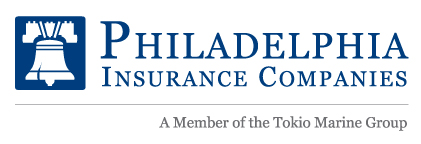Issues & Answers Special Advertising Section
April 2020

Paul Siragusa
Vice President of Underwriting
Philadelphia Insurance Companies’ Human Services Division

“PHLY’s risk management is amongst the best in the industry with the resources available to help our clients assess their enterprise risk management programs.”
What are the biggest issues facing the nonprofit insurance marketplace these days?
We’re starting to see the impact of recent legislation on the availability of insurance coverage in the marketplace, specifically for abuse and molestation coverage. All of the social inflation and the media coverage of these new bills and laws that have been passed in several states have really brought abuse and molestation issues into the forefront. We’re starting to see jury verdicts that are far in excess of what we used to encounter in this space. Another problem is latency of claims. By extending the statute of limitations, people who were abused can come forward as much as 40 years later in some cases. It’s difficult for an insurer to defend a case for something that happened that long ago. The resulting effect in the marketplace that we’re seeing is a real reduction in capacity.
Tell us more about your capacity concerns?
We’re starting to see decreased capacity on the part of both primary carriers and reinsurers, in terms of high limit excess policies. PHLY is no longer offering high-limit umbrellas and instead turning a keen eye toward high-hazard exposures. We’re seeing the same thing on the reinsurance side. On one-off placements, we’re seeing them offer significantly less in total limits exposed on a particular risk. Carriers who used to specialize in just excess casualty have shown a decreased interest in this space.
What do you suggest for agents on how to face the current market challenges?
The biggest issue agents need to face is getting out ahead and informing their clients of the lack of availability of coverage and educating them of the nature of a hard market and the fact that prices are firming in addition to the fact that the capacity is dwindling. The greatest source of friction that we see between agents and their clients is that they weren’t properly prepared for the news. It wasn’t the fact that their premiums went up or that their limits decreased. The other issue I would say that’s important is to start discussing with clients that their insurance program may very well change in the coming years. They may need to talk to them about maintaining less in terms of excess limits.
What is PHLY doing to help address the market challenges?
PHLY is one of the top five players in this human services insurance space. Last year, we finished out the year with $1.1 billion in written premium for just our human services products. We’re looking to grow that segment in the coming years. The way that we plan to do it, however, is to judiciously apply the limits that we have available to us and to really scrutinize the particular exposures on a given risk. As we move forward, we’ll be looking much more closely at difficult legal jurisdictions, along with the types of programs that our insureds provide, whether that’s foster care and adoption type programs or child residential facilities. All of that will factor into the availability of limits and the pricing that goes along with that. We currently have some of the best coverage forms in the industry to address these liability concerns.